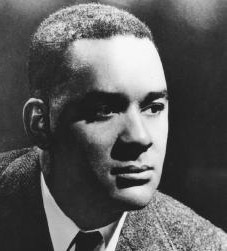By Bobbi Pinkert, Class of 1999
Sometimes there are advantages in being the “Second City,” which is how A.J. Leibling dismissed Chicago. He hailed from New York, which had become the nation’s cultural capital by 1871 when Chicago was reduced to ashes. Yet the Chicago Fire was a blessing in disguise. It freed the city from the heavy hand of tradition, allowing Chicago’s architects and artists to follow a Windy City muse.
As Liesl Olson, director of the Chicago Studies program at the Newberry Library, notes in her booklet “Modernism and Chicago”: “Despite, or perhaps because of critical neglect, geographic remoteness and the city’s industrial identity, writers and artists in Chicago produced works that were vital to the emergence and acceptance of Modernism.” (1)
Much of credit for this rise lies with the “midwives of Modernism” (2) beginning with Harriet Monroe, John Wellborn Root’s sister-in-law. In 1912, she began to publish Poetry, the first “little” Modernist magazine to support new poetry and literature in Chicago. She was the first to publish Carl Sandburg’s Chicago Poems.
In 1914, Margaret Anderson launched the Little Review, a periodical of new literature and art whose contributors included Ezra Pond, T.S. Eliot, Sherwood Anderson, and Ben Hecht. Literary critic Fanny Butcher, who became an important figure in the world of journalism, nurtured a cadre of twentieth century writers that included H.L. Mencken, Willa Cather, Sinclair Lewis, and Ernest Hemingway.
Katherine Kuh’s art gallery showcased the works of the European and American avant-garde artists. She eventually became a curator at the Art Institute of Chicago and established the first museum-dedicated art education program.
Driving these women, along with other female pioneers, was the belief that “art, no matter how experimental, needed to engage with the public.” (3)
The 1913 New York Armory Show came to Chicago with its International Exhibition of Modernist Art and drew twice the number of visitors to the Art Institute as it did in New York. It was the only modernist show given the imprimatur of a major museum. The show so impressed Chicago lawyer and art collector Arthur Jerome Eddy, that in 1916 he authored the first book about modern art in America titled “Cubists and Post Impressionists”.
Also in 1916 a small group of cultural philanthropists founded The Arts Club with the singular aim of exhibiting international contemporary art. Many of the most important artists of the twentieth century received their first showing at the club. These included Brancusi, Brandt, Braque, Chagall, Dali, Dubuffet, Leger, Noguchi, Picasso, Pollack, Rodin, and Seurat.
After World War I Chicago’s African American population swelled and with it, a concomitant rise in its art and culture. Chicago became a pioneering center for recording and performing music. The Chicago Defender promoted black fine arts and publicized the works of artists and the institutions that supported them. (4)
Gwendolyn Brooks, Langston Hughes, Richard Wright, Arna Bontemps, and Margaret Walker were all part of South Side Writers Workshop, founded in 1936. The group provided inspiration and encouragement to budding writers. Their own works were exemplars of the tribulation and exultation of life in segregated Chicago.
The visual arts attracted many African Americans to Chicago where the school of the Art Institute was “bias-free”. Charles Dawson was among them; he was a commercial illustrator who founded the Black Artist Collective in 1912 and later the Chicago Artists League. In 1922, he was the subject the world’s first solo show of an African American artist at the Art Institute. Other Chicago-based artists included Edouard Schott, Charles White, Archibald Motley, Jr., and Eldzier Cortor.
The blues, jazz, and gospel music were all born in Chicago during the Black Renaissance that followed the Great Migration. The rest of the world knew Chicago’s music through its artists that included Louis Armstrong, Thomas Dorsey, and Mahalia Jackson.
Chicago’s position as an industrial center gave rise to the opportunity for creative and innovative industrial design. To improve the design of manufactured goods, a group of manufacturers, bankers, department store executives, artists, and designers founded the Association of Arts and Industries in 1922. The organization became a focal point and battleground for modern design and education. Supporters included Frank Lloyd Wright and Lazlo Moholy-Nagy. It was the seed for the founding of the New Bauhaus in 1937 and an inspiration for the “modern” designs at the Century of Progress.
With the close of the 1933 World’s Fair and the advent of World War II, the era of Modernism closed, making way for a new brand of avant-garde artists and architects in Chicago who, again, created new visions for the world.
Chicago the Second City? Yes—second to none!
________________________________________
1-“Modernism and Chicago” Liesl Olson Digital Collections for the Classroom, Newberry Library.
2-“Chicago Renaissance: Literature and Art in the Midwest Metropolis” Liesl Olson Yale University Press 2017
3-Ibid
4-“Chicago Black Renaissance”, Encyclopedia of Chicago








Good article! “Second City” moniker is like other terms intended to be a negative that becomes an identity and a force to prove the label wrong! Love it!
Thanks All
Happy to know there are readers out there in the cloud!
This is very interesting and well-written! Thanks, Bobbi!
Bobbi – Thanks for this article.
BTW, Liesl Olson’s Newberry Library booklet “Modernism and Chicago” is available online:
http://dcc.newberry.org/collections/modernism_and_chicago
and is worth a look.
Wow, Bobbi. What a wonderful summary of what was going on in Chicago. Ironic, tho, isn’t it that Modernism is thought to end at World War II when what we think of Miesian Modernism comes just at that time. Defining styles is difficult. Kudos; thanks for a great article.
Great summary of so many important people and events! Thanks Bobbi!
Bobbi,
Bobbi,
Wonderful article!
As team leader of exhibit hosts, I make a point to dispel the pejorative meaning of “Second City” for our model city visitors and explain what it really means. They are always
surprised.
Harvey